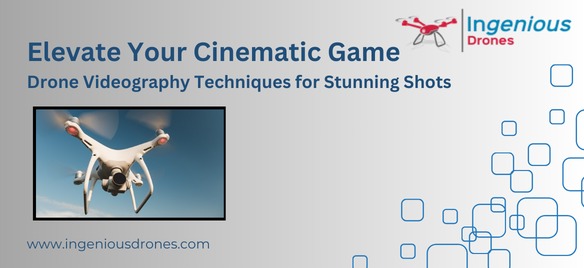Introduction
In the realm of visual storytelling, drones have revolutionized the way filmmakers capture scenes, offering breathtaking perspectives and dynamic movements that were once only accessible to big-budget productions. With the right techniques, even amateur videographers can achieve cinematic brilliance. In this guide, we’ll delve into essential drone videography techniques to help you elevate your storytelling game.
Utilizing Intelligent Flight Modes
Most modern drones come equipped with intelligent flight modes designed to simplify complex maneuvers. Modes like “CineSmooth” or “Tripod” offer slower, more controlled movements, ideal for smooth and cinematic shots. Experiment with these modes to find the one that best suits your vision.
Mastering Camera Settings
Understanding your drone’s camera settings is crucial for achieving cinematic results. Adjust parameters like shutter speed, ISO, and white balance to match your desired mood and lighting conditions. A slower shutter speed (around 1/50th of a second) creates a natural motion blur, adding a cinematic touch to your footage.
Panning and Tilting Movements
Smooth pans and tilts are staple techniques in cinematic storytelling. Execute these movements slowly and steadily to maintain a seamless flow. Consider using a remote with joysticks for precise control, or invest in a gimbal for even smoother operation.
Low and High Altitude Shots
Varying your drone’s altitude provides diverse perspectives. Low altitude shots can create intimate, immersive scenes, while high altitude shots offer sweeping, grandiose views. Use these perspectives strategically to convey emotion or emphasize key elements in your story.
Incorporating Point of Interest (POI) Shots
POI shots involve circling around a subject or point of interest. This technique adds dynamic movement and depth to your footage. Experiment with different speeds and distances to find the optimal balance for your specific shot.
Utilizing ND Filters
Neutral density (ND) filters are indispensable tools for controlling exposure in bright conditions. They allow you to maintain a slow shutter speed for a cinematic look, even in high-light environments. Invest in a set of ND filters and experiment with different strengths to achieve the desired effect.
Conclusion
Mastering drone videography for cinematic shots requires a combination of technical skill, creative vision, and practice. By applying these techniques and continuously honing your craft, you’ll be well on your way to creating visually stunning and emotionally impactful cinematic sequences. Remember, the key lies in experimentation and finding your unique style. So, take to the skies, explore new perspectives, and let your creativity soar!


Recent Comments